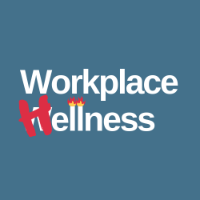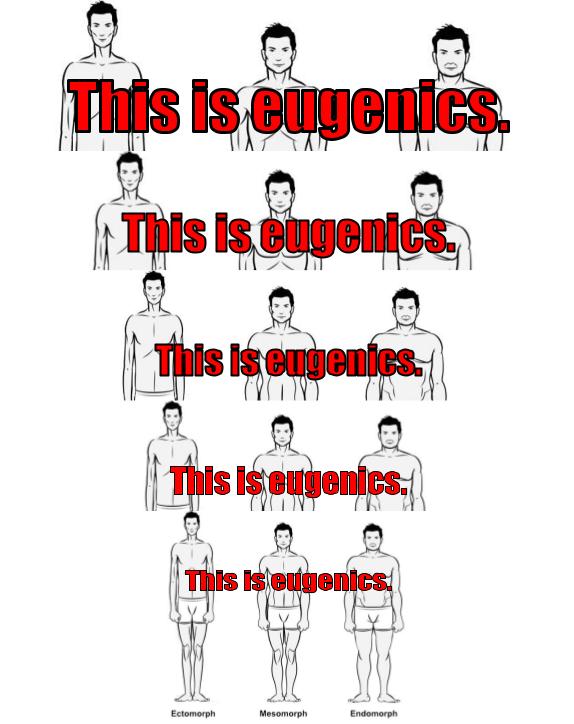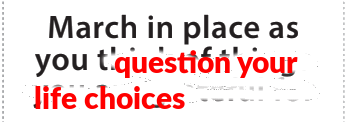
CW: Ableism, annoying mindfulness activities, dance class trauma
First of all, of course the US government has workplace wellness resources! Second, these materials are just as dorky as you would imagine government resources would be. No kombucha bars here, folks, just infantilizing activity recommendations. The upside is that all of the programs and advice are based on evidence, as opposed to what’s trendy at the moment, but the downside is that you would never, ever want to do any of these activities with colleagues.
For example, look at the “5 Card Draw” activity that the CDC has linked to from the Association of Chronic Disease Directors.
I like the script they give for the facilitator to follow at the beginning: “We’re going to do a few easy and fun activities intended to activate the brain and the body. Do the movements that are comfortable for your body and adapt activities that don’t work for you.” What’s nice about this is that it doesn’t say this is for weight loss or insurance savings or even health. It would be better if the facilitator didn’t put the burden of adapting movements for people onto participants, but many people leading workplace wellness programs don’t have a lot of training in adapting exercises (or any training at all in leading exercise groups).
What follows, however, is painfully awkward. Participants are supposed to draw cards from a deck. The cards direct the group to do a movement for 20-30 seconds before moving on to another movement. Some of the options are pretty simple, like “Walk in place.”

There are a number of these innocuous suggestions in the deck, but there are also stranger choices.

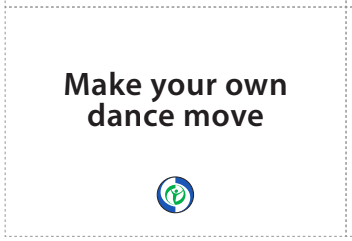
I’m unsure what differentiates these two cards, but maybe that’s because I’m not a good dancer. Unless there is “upbeat music” (which the leader’s guide suggests), I also imagine that making up your own dance move for 20-30 seconds would be awkward.
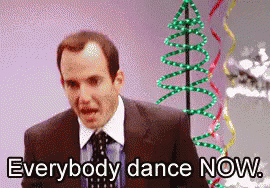
In fact, this activity, with its top-down structure and requests to move in awkward ways around colleagues and perhaps supervisors, reminds me of a mildly traumatic college class I took. It was called Theology of Embodiment, and a professor of religious studies and a professor of dance team taught it. I naively took this class to fulfill a requirement, thinking it would be goofy but interesting. (Ah, youthful optimism!) One day, we did a “guided movement exercise”—the dance professor was telling us what to do—that involved me laying flat on the ground while my activity partner straddled me on all fours, lifted up my head, and kissed my neck.
I got an A-.
I’m sure there are offices where people would enjoy doing this activity with their colleagues and it would be good, silly fun, but I suspect that most people don’t go to work to invent dance moves with their colleagues, and the Simon Says structure of the activity treats employees like preschoolers who need instructions for moving their bodies.
All of this is troubling enough, but the activity also shoehorns in mindfulness in an Orwellian way. These two cards are excellent examples.
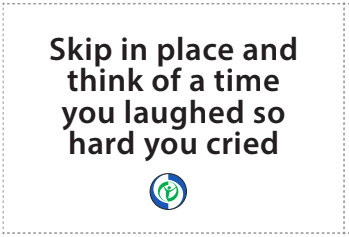
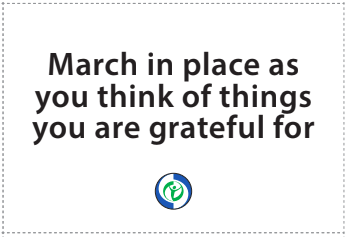
I suspect these two cards are supposed to “activate the brain,” but they read like your workplace is trying to force cheerfulness on you. Skipping in place and thinking of a time you laughed hard seems innocuous, but it ignores the fact that people with larger breasts might not want to skip unless they are wearing a sports bra or other clothing that makes them physically and socially comfortable. I also simply object to my employer telling me to cheer up.
Of course we should treat our colleagues with respect and not take out our own grumpy moods on others, but our feelings and moods are our own. (Or are they anymore? Cue ominous music.)
In the US, we are used to certain levels of workplace surveillance, with our emails being monitored and many of us working in open-plan offices or cubicle farms with no physical privacy. But now, with workplace wellness programs, employers want to exert control over our bodies and our minds. I find it both amusing and alarming that one of the cards commands you to march (a military movement) while being grateful. We associate marching with conformity, hierarchies, and command. The metaphor here is sneaky (and I doubt intentional), but this card drafts you into the army of gratitude.
Unfortunately, this seems to be a trend with workplace wellness programs, although the CDC’s suggestions are clunky and inept compared to many of the slicker corporate offerings. We’ll take a closer look at mindfulness in workplace wellness programs next week, but in the meantime,
MARCH IN PLACE AND BE GRATEFUL, MY SWEET ROBOTS.

